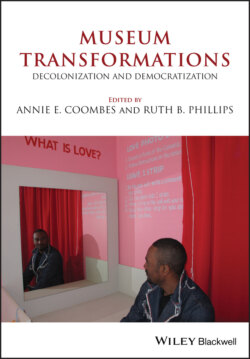Читать книгу Museum Transformations - Группа авторов - Страница 60
Conclusion: Ghosts of future nations
ОглавлениеIn the course of this chapter, we have examined two museums in India that were inspired by Yad Vashem, though the Holocaust museum paradigm traveled to Anandpur Sahib and to Dharamsala along very different routes. That both Sikhs and Tibetans would wish to model their museums on Yad Vashem shows how Jewish memorial practices offer a template for other groups to commemorate historical suffering of their own. But a template cannot be mechanically applied to simply reproduce the original in a new place. As each community set about making its own museum for its own holocaust, it has had to reckon with local histories and local politics that have weighed on the consequences of remembering.
When we compare the trajectories taken by the Tibetan and Sikh projects, an irony comes to the fore. The Sikh community has made martyrdom the cornerstone of its identity, but the museum that set out to commemorate their trauma was turned into a joyous celebration of Sikh integration with India instead of recounting Sikh suffering at Indian hands. On the other hand, the Tibetan exile community, which has suffered terrible persecution and homelessness in the past six decades, has chosen not to make the memorialization of its sad history central to its self-representation. Yet it is the Tibetans who have been able to make a trauma museum for themselves. Why was the Tibetan project possible to achieve, and why did the Sikh claim to traumatic history have to be transmogrified?
Part of the answer may lie in the way these two communities present their relationship to the otherworldly and the thisworldly, to religion and realpolitik. The Tibetan self-presentation as an otherworldly, spiritual people makes them appear unthreatening; as long as this aspect predominates they are allowed a small enclave of political memory that will hardly affect the fragile balance between India and China. But the Sikh community, although defined by faith, is robustly political in its demands. Claiming victimhood rather than martyrdom, the consequences of their memorialization are too dangerous for India to bear. Tibetan dreams of freedom do not disturb the contours of the Indian map, while the Sikhs’ demand for Khalistan threatened to tear it apart.
There is a lesson to be learned here about the relationship between memorialization and national self-definition. Fifty or sixty years ago, we used art museums to consolidate national identity by inviting the citizenry to collectively “own” the great cultural tradition that had been put on display. More recently, the museum of trauma has emerged as a new kind of national museum. The suffering that the people have endured becomes another kind of heritage: a shared experience that binds members of the populace to each other, even as it augurs their transition into a new phase that will be more just, and more safe, than the one that has gone before. Thus the many museums of trauma that are also sites for the foundational narratives of new nations or reinvented ones: in postapartheid South Africa, in postcommunist eastern Europe, in post-Liberation Bangladesh.
Both the Khalsa Heritage Complex and the Tibet Museum are also dedicated to nations; but the nations they gesture toward, Khalistan and Tibet, are political aspirations that have not become political facts. One museum memorializes a separatist movement that failed; the other mourns for a land that is occupied. Both institutions are haunted by the ghosts of nations whose existence – if it ever comes about – lies far in the future.
